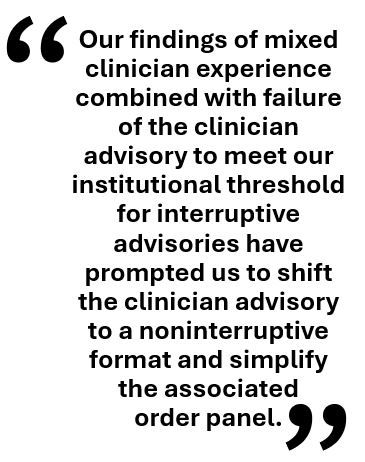- Clinical Technology
- Adult Immunization
- Hepatology
- Pediatric Immunization
- Screening
- Psychiatry
- Allergy
- Women's Health
- Cardiology
- Pediatrics
- Dermatology
- Endocrinology
- Pain Management
- Gastroenterology
- Infectious Disease
- Obesity Medicine
- Rheumatology
- Nephrology
- Neurology
- Pulmonology
High Blood Pressure Advisory in EHR Improves Hypertension Diagnosis, Control Across a Primary Care Network
An EHR advisory that combined alerts to medical assistants with escalation to clinicians increased likelihood of hypertension control by a mean 18% per month.
A high blood pressure advisory embedded in the electronic medical record (EMR) significantly improved hypertension control and diagnosis across a Stanford (CA) Medicine primary care network, according to a quality improvement study published in JAMA Network Open.
©Meeko Media/stock.adobe.com

The intervention, which combined EMR alerts with team-based workflows, led to mean monthly increase of 18.3% in the likelihood of hypertension control (95% CI, 1.10–1.27; P <.001) and an 8.5% absolute increase in new hypertension diagnoses, rising from 12.1% to 20.6% (OR, 1.34; 95% CI, 1.13–1.58; P =.01).
For the quality improvement study, researchers evaluated 5778 patients with preexisting hypertension across 8 clinics for the primary outcome and assessed 14,367 patients without prior hypertension across 28 clinics for secondary outcomes.
The primary outcome was BP less than 140/90 mm Hg at a clinic visit 6 months following an initial primary care visit and secondary outcomes included reassessment of BP after an initial elevated value, change in antihypertensive medication, and new hypertension diagnoses. Qualitative outcomes focused on implementation barriers and facilitators, first author Anuradha Phadke, MD, clinical associate professor, medicine - primary care and population health at Stanford Medicine and colleagues wrote.
Over the 6-month interval, modeled hypertension control improved from 82.3% to 92.3% in the intervention cohort, while it declined slightly from 71.5% to 70.3% in the control group. The advisory, which prompted medical assistants to recheck elevated blood pressures and when elevated BP persisted, nudged clinicians with an advisory including an order panel link, dramatically increased blood pressure rechecks (OR, 4.76; 95% CI, 4.45–5.10; P <.001) from 37.6% preintervention to 77.9% in postintervention visits but did not significantly change antihypertensive medication choice or prescribing patterns.
The study cohort had a mean age of 66.5 years and 49.2% were women. Participants self identified as White (41.7%), Hispanic (10.7%), and Asian (30.2%). Baseline characteristics were similar across control and intervention cohorts, according to the study. The most common patients from 8 clinics were comorbidity was diabetes, followed by pulmonary disease, kidney disease, cancer, and congestive heart failure.

Implementation success depended heavily on the engagement of medical assistants (MA), who embraced workflow changes and demonstrated ownership of blood pressure rechecks, according to the study. However, clinicians reported mixed experiences, often bypassing the EMR's recommended order panel citing its complexity. Overall barriers to adoption included time pressures, competing clinical priorities, and difficulties with best-practice blood pressure measurement in some clinic settings.
Despite these challenges, the integration of the advisory into standard EMR workflows and its visibility within clinical environments helped drive improvements. Staff cited the perceived clinical benefit and team-based approach as major facilitators. Phadke et al noted that the intervention's success suggests future EMR-based strategies should focus on optimizing workflow fit and minimizing clinician burden to sustain adoption.
The team stressed that any quality improvement evaluation combine quantitative and qualitative approaches as looking at the former alone, "without an eye to the impact on users, is inadequate."
The researchers also noted several study limitations including the nonrandomized design, assessment of the primary outcome after just 6 months, precluding the time needed to determine the program's sustainability, and, importantly, the absence of home blood pressure readings, now increasingly becoming standard of care. Nonetheless, the team concluded that pairing EMR prompts with team-based care strategies offers a scalable model for improving hypertension outcomes, and they are currently exploring similar advisories for telehealth and specialty care settings.
